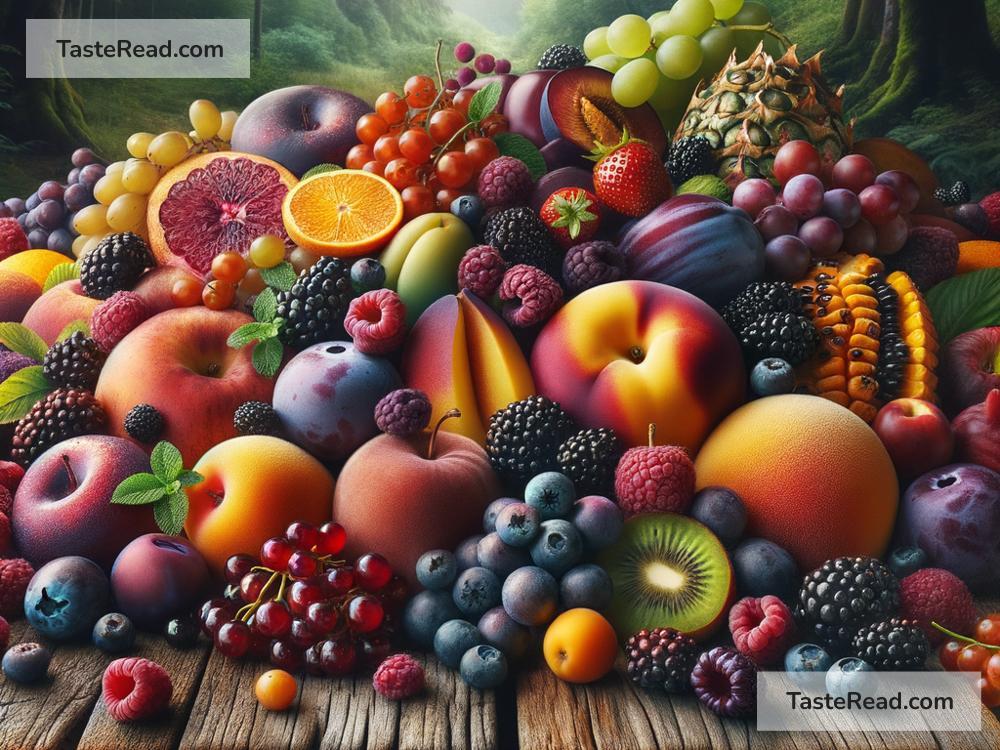The Impact of Wild Fruit Varieties on Taste Diversity
When we think of fruit, we often imagine the familiar apples, bananas, oranges, and strawberries available at our local grocery store. These cultivated fruits are selected, grown, and bred over generations to be sweet, easy to transport, and visually appealing. But outside the shelves of supermarkets exists a world of wild fruits, with flavors, textures, and aromas so diverse they can surprise even the most adventurous food lovers. Wild fruit varieties play an essential role in enhancing taste diversity and offer a reminder that nature’s bounty goes far beyond the common choices.
What Are Wild Fruits?
Wild fruits grow in nature without human cultivation or interference. They might be found alongside a hiking trail, deep in forests, or even growing in your backyard. Unlike cultivated fruits, which are bred for consistency and convenience, wild fruits are shaped by factors like soil, weather, and evolution. Some taste remarkably sweet, while others are tangy, sour, bitter, or earthy. Wild fruits often carry unique and intense flavors that make them special.
Examples of wild fruits include elderberries, wild strawberries, pawpaws, mulberries, gooseberries, and cloudberries. Each of these fruits has its own story and grows in specific regions and conditions, resulting in a wide variety of tastes, colors, and textures.
Wild Fruits Expand Taste Horizons
The flavors of wild fruits aren’t just for novelty—they expand our understanding and appreciation of food. In nature, every wild fruit develops its own distinct taste profile. While cultivated fruits are usually sweetened to appeal to the majority of consumers, wild fruits can be unpredictable, offering flavors that are tangy, tart, floral, nutty, or even spicy.
Take, for example, the wild elderberry. These tiny, dark berries aren’t sweet like grapes or blueberries, but they have a rich, earthy flavor that is perfect for syrups, jams, and wines. Wild strawberries, on the other hand, are smaller than their store-bought versions but pack an intense sweetness with hints of floral notes. Mulberries can range from mildly sweet to slightly bitter depending on their ripeness and variety, adding curious flavor combinations to dishes.
Such depth and variety of taste challenge us to enjoy fruits in new and exciting ways. Instead of treating fruit as just a snack or dessert, wild varieties encourage experimentation. Chefs, food enthusiasts, and home cooks alike use these fruits to elevate dishes, create innovative recipes, and celebrate the diversity of nature’s flavors.
A Connection to Local and Seasonal Eating
Wild fruits remind us of the importance of eating local and seasonal produce. Unlike cultivated fruits that can often be grown year-round or transported globally, wild fruits are tied strongly to their specific environments and seasons. For example, cloudberries grow in cool climates like Scandinavia and ripen during late summer. Pawpaws, native to North America, thrive in the fall. Eating wild fruits allows us to connect with the rhythms of nature, appreciating what each season offers.
More importantly, exploring wild fruits fosters a sense of regional pride. Foraging for wild blueberries in Maine, picking wild mangoes in the forests of India, or discovering a native Australian bush plum creates a unique sense of place. Unlike supermarket shelves that look almost the same anywhere you go, wild fruits tell local stories about their ecosystems, history, and cultures.
Preserving Taste Diversity for the Future
Unfortunately, wild fruit varieties are not immune to the growing pressures of deforestation, urbanization, and climate change. Many wild plants are disappearing as their natural habitats are cleared or altered. As these fruits vanish, so does the taste diversity they bring to the world. Imagine living in a future where only a handful of genetically uniform fruits remain, robbing us of the rich variety that wild fruits offer.
Preserving wild fruits and their ecosystems is crucial not just for biodiversity but for maintaining the full spectrum of flavors nature provides. Conservationists, farmers, and communities play essential roles in protecting wild fruit species. Some initiatives involve rewilding landscapes or planting native fruit trees to encourage the growth of wild varieties. Supporting local foragers and businesses that sell sustainably collected wild fruits can also help protect these treasures.
Why Wild Fruits Matter
Wild fruits are more than just an alternative food source—they are a celebration of taste diversity. They offer unique flavors that enrich our culinary experiences, connect us to local environments, and teach us the value of seasonal and regional eating. By embracing wild fruits, we not only enhance our appreciation for food but also take steps toward protecting nature’s incredible variety.
So, the next time you have the opportunity to try a wild berry, plum, or pawpaw, say yes to the adventure! You might discover a new favorite flavor, connect with the land around you, and become part of the effort to preserve nature’s rich diversity. Wild fruits remind us that there’s so much more to food than what we find on store shelves—and that sometimes, the best flavors come from the wild.


